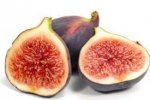-
Christian Chat is a moderated online Christian community allowing Christians around the world to fellowship with each other in real time chat via webcam, voice, and text, with the Christian Chat app. You can also start or participate in a Bible-based discussion here in the Christian Chat Forums, where members can also share with each other their own videos, pictures, or favorite Christian music.
If you are a Christian and need encouragement and fellowship, we're here for you! If you are not a Christian but interested in knowing more about Jesus our Lord, you're also welcome! Want to know what the Bible says, and how you can apply it to your life? Join us!
To make new Christian friends now around the world, click here to join Christian Chat.
In the garden of Eden there was the tree of knowledge (We have that, and it causes death)
We know we are not trees, but only {metaphorical} branches, offshoots of the true vine, Jesus Christ. I believe He was the {metaphorical} tree of Life placed in the garden of Eden; He holds the keys to life and death; all life is in Him; He is author and giver of life etc, and eternal life is promised to those who surrender to and abide in Him (John 15:4-5; Romans 6:23). The cherubim were placed at the entrance to the garden to guard the tree of life after Adam and Eve ate from the forbidden tree. Many take this to mean that they were being protected from living forever in their fallen state.
The fruit we are to bear has different aspects to it. One is character building: the fruit of the Spirit is love, joy, peace, patience, kindness, goodness, faithfulness, gentleness, and self-control. Against such things there is no law.
Peter adds to this: make every effort to add to your faith excellence, to excellence, knowledge; to knowledge, self-control; to self-control, perseverance; to perseverance, godliness; to godliness, brotherly affection; to brotherly affection, unselfish love. For if these things are really yours and are continually increasing, they will keep you from becoming ineffective and unproductive in your pursuit of knowing our Lord Jesus Christ more intimately.
So our life surrendered to God, and our works through faith are fruit, and so are people who come to Christ through us (Rom 1:3; Phil 4:17), and there is also the fruit of our lips as we praise God and witness to others (Heb 13:15).
These are good fruits, partaken of when aligned with the will of God.
Evil fruits would be the result of disobeying God, defying God, following self will in opposition to God's will, severing ourselves from fellowship with Him, etc. That is the fruit Adam and Eve bore and ate (lived). They followed the desires of the flesh and the desires of the eyes and pride of life, in turning away from God after being in fellowship with Him. It is what we all do before being regenerated by the Holy Spirit of God.
I think it will be wonderful to be restored to the garden in the new earth. Come LORD Jesus.
PS: eat a fig sometime, they are very sweet and tasty
T
Oh sorry I thought it was a fig, but it was a date. Never had a fig either, they look tasty.
View attachment 144958
View attachment 144958
The book that no one understood.
The Lord wants ALL to understand The Revelation of Jesus Christ, so why not try a bit of study and LOTS of prayer and see how it begins to open up to you! 1Peter 1v10-12
B
Oh sorry I thought it was a fig, but it was a date. Never had a fig either, they look tasty.
View attachment 144958
View attachment 144958
[TABLE="width: 700"]
[TR]
[TD="align: center"]
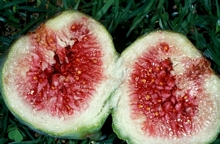
[TD="align: center"]
A common concern among humans is whether we eat fig wasps when we consume figs. The short answer is yes for dried figs and usually no for fresh figs. The fig species that is eaten is the domesticated fig Ficus carica, which has been in cultivation for thousands of years. It occurs naturally in the Mediterranean region, but is also cultivated in this area as well as in various other parts of the world where there is a suitable climate, such as California and South Africa.
[/TD][/TR]
[TR]
[TD="align: center"]
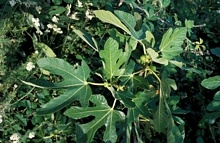
[TD="align: center"]
Commercial cultivation of fresh figs for the consumer market usually centres on parthenocarpic cultivars, i.e. varieties that have been artificially selected for. These varieties do not need pollination to produce fruit. Fig trees will normally abort their fig crop if the figs are not pollinated as the figs are then an energy cost with no benefit. Figs that are grown for dry fig production are usually cultivars that need pollination (caprification).
[/TD][/TR]
[TR]
[TD="align: center"]
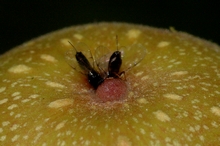
[TD="align: center"]
Female fig wasp pollinators enter the fig through the ostiole (opening at the apex of the fig) to pollinate the flowers and to lay their eggs down the style into the ovary of the flower. See lifecycle. However, Ficus carica is a functionally dioecious species, which means that the male and female reproductive functions of the species are separated between individual trees, with some trees being female and others male. Female trees produce seeds in the figs and no wasps, whereas male trees produce a few seeds but mostly wasps. The wasps then load up pollen before dispersing from the fig they have bred in and hence perform the male function for the species. How does this happen?
[/TD][/TR]
[TR]
[TD="align: center"]
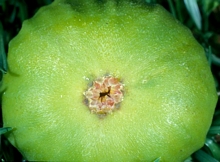
[TD="align: center"]If figs from female trees of varieties that do require pollination are used in fig production the only possibility of eating wasps is if the foundress females that entered the fig to pollinate the flowers did not manage to exit the fig again. This does happen, but often the female wasps will escape from the fig they entered. The wasps do not breed in the fig and only seeds are produced performing the female function for the species.
[/TD]
[/TR]
[TR]
[TD="align: center"]
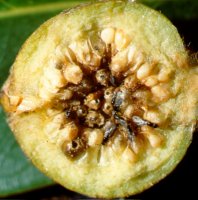
[/TD]
[TD="align: center"]Wild figs are also very nutritious and eaten by many indigenous people. In these cases the fig wasps that have not departed from the fig they bred in are consumed along with the fig. Most of the fig wasps will have left the fig before it ripens and becomes attractive to frugivores, but many species have wingless males which die and remain within the fig cavity. There are also nematode worms that are specific to fig wasps and a host of other fungal organisms residing within the fig cavity of wild figs, but these don't appear to have any negative effect on human health.
[/TD]
[/TR]
[/TABLE]
Wow...so in essence you are saying there is a chance we can get "extra protein" with figs?....
looks delicious inside I will try one day, Arrrg will the fig wasp hurt me? After reading this I scratch my head should I or shouldn't I, quite the question
[TABLE="width: 700"]
[TR]
[TD="align: center"]
 [/TD]
[/TD]
[TD="align: center"]
[/TR]
[TR]
[TD="align: center"]
 [/TD]
[/TD]
[TD="align: center"]
[/TR]
[TR]
[TD="align: center"]
 [/TD]
[/TD]
[TD="align: center"]
[/TR]
[TR]
[TD="align: center"]
 [/TD]
[/TD]
[TD="align: center"]If figs from female trees of varieties that do require pollination are used in fig production the only possibility of eating wasps is if the foundress females that entered the fig to pollinate the flowers did not manage to exit the fig again. This does happen, but often the female wasps will escape from the fig they entered. The wasps do not breed in the fig and only seeds are produced performing the female function for the species.[/TD]
[/TR]
[TR]
[TD="align: center"]
 [/TD]
[/TD]
[TD="align: center"]Wild figs are also very nutritious and eaten by many indigenous people. In these cases the fig wasps that have not departed from the fig they bred in are consumed along with the fig. Most of the fig wasps will have left the fig before it ripens and becomes attractive to frugivores, but many species have wingless males which die and remain within the fig cavity. There are also nematode worms that are specific to fig wasps and a host of other fungal organisms residing within the fig cavity of wild figs, but these don't appear to have any negative effect on human health.
[/TD]
[/TR]
[/TABLE]
[TABLE="width: 700"]
[TR]
[TD="align: center"]

[TD="align: center"]
A common concern among humans is whether we eat fig wasps when we consume figs. The short answer is yes for dried figs and usually no for fresh figs. The fig species that is eaten is the domesticated fig Ficus carica, which has been in cultivation for thousands of years. It occurs naturally in the Mediterranean region, but is also cultivated in this area as well as in various other parts of the world where there is a suitable climate, such as California and South Africa.
[/TD][/TR]
[TR]
[TD="align: center"]

[TD="align: center"]
Commercial cultivation of fresh figs for the consumer market usually centres on parthenocarpic cultivars, i.e. varieties that have been artificially selected for. These varieties do not need pollination to produce fruit. Fig trees will normally abort their fig crop if the figs are not pollinated as the figs are then an energy cost with no benefit. Figs that are grown for dry fig production are usually cultivars that need pollination (caprification).
[/TD][/TR]
[TR]
[TD="align: center"]

[TD="align: center"]
Female fig wasp pollinators enter the fig through the ostiole (opening at the apex of the fig) to pollinate the flowers and to lay their eggs down the style into the ovary of the flower. See lifecycle. However, Ficus carica is a functionally dioecious species, which means that the male and female reproductive functions of the species are separated between individual trees, with some trees being female and others male. Female trees produce seeds in the figs and no wasps, whereas male trees produce a few seeds but mostly wasps. The wasps then load up pollen before dispersing from the fig they have bred in and hence perform the male function for the species. How does this happen?
[/TD][/TR]
[TR]
[TD="align: center"]

[TD="align: center"]If figs from female trees of varieties that do require pollination are used in fig production the only possibility of eating wasps is if the foundress females that entered the fig to pollinate the flowers did not manage to exit the fig again. This does happen, but often the female wasps will escape from the fig they entered. The wasps do not breed in the fig and only seeds are produced performing the female function for the species.[/TD]
[/TR]
[TR]
[TD="align: center"]

[TD="align: center"]Wild figs are also very nutritious and eaten by many indigenous people. In these cases the fig wasps that have not departed from the fig they bred in are consumed along with the fig. Most of the fig wasps will have left the fig before it ripens and becomes attractive to frugivores, but many species have wingless males which die and remain within the fig cavity. There are also nematode worms that are specific to fig wasps and a host of other fungal organisms residing within the fig cavity of wild figs, but these don't appear to have any negative effect on human health.
[/TD]
[/TR]
[/TABLE]
Figs aren't even tasty. That would have been really bad.
http://naldc.nal.usda.gov/naldc/download.xhtml?id=IND43620476&content=PDF
B
Certain type of figs are... very tasty, sweet! There's two original main types, the Smyrna fig which is very good, and then the Capri (or Goat fig) which is bitter. Fig Newtons I believe are mostly made out of the bitter fig with sugar added. In California they had a time trying to get the sweet Smyrna fig to take.
http://naldc.nal.usda.gov/naldc/download.xhtml?id=IND43620476&content=PDF
http://naldc.nal.usda.gov/naldc/download.xhtml?id=IND43620476&content=PDF
The taste of the sweet Smyrna fig in the middle east was kind of like my experience with cheesecake. The only type of cheesecake I ever had growing up was the Jello pudding type my mother used to make for me, with graham cracker crust. Then I discovered real cheesecake, like New York cheesecake while in Europe.
They brought it out to me and it was this tall thin slice on a plate with a slighty browned top. I looked at it and said to myself, "I'm being cheated, this isn't enough!" When I took the first bite it slowly, very slowly rolled around in my mouth as a very rich, thick texture which lasted quite a while. Then I said to myself, "Oh, so that's what real cheesecake tastes like." So when I think of cheesecake, I don't think of the Jello substitute anymore.
They brought it out to me and it was this tall thin slice on a plate with a slighty browned top. I looked at it and said to myself, "I'm being cheated, this isn't enough!" When I took the first bite it slowly, very slowly rolled around in my mouth as a very rich, thick texture which lasted quite a while. Then I said to myself, "Oh, so that's what real cheesecake tastes like." So when I think of cheesecake, I don't think of the Jello substitute anymore.
B
The taste of the sweet Smyrna fig in the middle east was kind of like my experience with cheesecake. The only type of cheesecake I ever had growing up was the Jello pudding type my mother used to make for me, with graham cracker crust. Then I discovered real cheesecake, like New York cheesecake while in Europe.
They brought it out to me and it was this tall thin slice on a plate with a slighty browned top. I looked at it and said to myself, "I'm being cheated, this isn't enough!" When I took the first bite it slowly, very slowly rolled around in my mouth as a very rich, thick texture which lasted quite a while. Then I said to myself, "Oh, so that's what real cheesecake tastes like." So when I think of cheesecake, I don't think of the Jello substitute anymore.
They brought it out to me and it was this tall thin slice on a plate with a slighty browned top. I looked at it and said to myself, "I'm being cheated, this isn't enough!" When I took the first bite it slowly, very slowly rolled around in my mouth as a very rich, thick texture which lasted quite a while. Then I said to myself, "Oh, so that's what real cheesecake tastes like." So when I think of cheesecake, I don't think of the Jello substitute anymore.
In the garden of Eden there was the tree of knowledge (We have that, and it causes death) There were other trees for Adam and Eve to eat off (God doesn't say what those trees do) Then there was the tree of life (Was that the way to heaven?) What about the cherubs on either side of the garden (Bio polarization guarding the way back in?)
Maybe?
Maybe?
And the cherubs will guard heaven from those who would enter and ruin the beautiful world the Lord has created for us.
I think we must... be judgmental to not eat from the tree of the knowledge of good and evil. The word judgment in God's Word is not always used to mean condemnation. It can mean discernment between good and evil also.
The tree of the knowledge of good and evil represent Satan's ways of trying to be one's own god.
The tree of the knowledge of good and evil represent Satan's ways of trying to be one's own god.
Me too, nor seen in person.. But here, i located a simple, simple recipe from a mediterranean cookbook: Fresh figs w/ orange and grand marnier. Trouble is, we neither have the figs nor the g.marnier.
12 slightly underripe green or purple figs, 1 c fresh orange juice, 1/4 c grand marnier
Cut stems into quarters lengthwise, place in medium bowl and pour orange juice and g. marnier over top. Cover and refrigerate overnight.
Transfer to a glass serving dish and serve.
Note: This is a recipe where ultimate success depends on quality of ingrdients. Squeeze ur own oranges, not reconstituted orange juice.
12 slightly underripe green or purple figs, 1 c fresh orange juice, 1/4 c grand marnier
Cut stems into quarters lengthwise, place in medium bowl and pour orange juice and g. marnier over top. Cover and refrigerate overnight.
Transfer to a glass serving dish and serve.
Note: This is a recipe where ultimate success depends on quality of ingrdients. Squeeze ur own oranges, not reconstituted orange juice.
Huh I learned something I've never ate a fig fruit before.
Or maybe it was a type of fig tree fruit....they did sew clothes to hid their nakedness with fig leaves ..maybe they got the leaves from the very tree they ate. I don't have a clue for sure...lol
The first mention of fig (Ficus carica) in the OT is Gen.3.7, when adam and eve sewed fig leaves together. This is the same fig mentioned in Nu. 13.23, Dt. 8.8 and 50+ more times in the Bible.
All the Eng. Versions of the Bible agree substantially with the AV abt references to the fig. Its generally regarded as a native of southwestern Asia or Syria, but In early times, it was extensively cultivated in Egypt, Palestine, and Syria. In Samuel, part of abigail’s present to king david consisted of 200 cakes of figs.
The fruit is said to be poisonous for a short time before ripening, but when ripe the poisonous principle disappears and is replaced by sugar. (Plants of the Bible, Moldenke, p.105)

